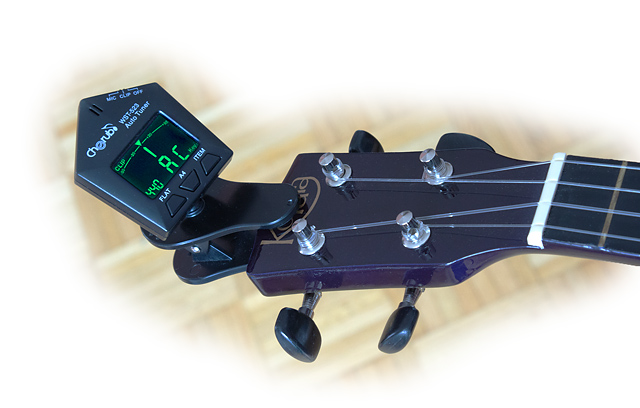Tuning with an Electronic Tuner
Selecting a tuner
Guitar tuners are not to be recommended for tuning an ukulele. Be sure to get a chromatic tuner. Clip tuners are very useful, since they pick up the tone directly with the clip, so they work fine even in noisy conditions (and that’s exactly the reason for using an electronic tuner anyway!) There’s a huge selection of tuners available for little money. However I want to point out that many of the cheap (and also some of the more expensive) tuners are not overly precise, besides the tuning you get with them is not “musical” — the tuner cannot know what you intend to play after tuning the uke! Other methods are much better suited to achieve a precise and musical tuning. That’s why I regard electronic tuners just as a compromise. They can be useful, for example to quickly achieve an acceptable tuning even in a noisy environment (where it would be difficult to tune by ear).
 Usage
Usage
First clip the tuner on the head of the ukulele, as shown in the illustration. Pluck a string, and the tuner will show which note you are playing. The needle shows how closely the pitch of your played tone meets this note. Turn the knob of the tuner until the string is tuned exactly to the right note. (Repeat with all other strings.) The following illustration shows the right notes for GCEA tuning:
Unfortunately, many tuners don’t show the octave of the tone you’re playing. Thus, it can happen that beginners tune their instrument one octave too deep (I’ve already seen that a few times). (An octave too high can’t happen since this would destroy the instrument or the strings… so be sure not to overtighten the strings.) For your orientation here is a recording how playing the open strings should sound after tuning the ukulele:
Tones of the ukulele: G,C,E,A (High G):


 English
English  Deutsch
Deutsch